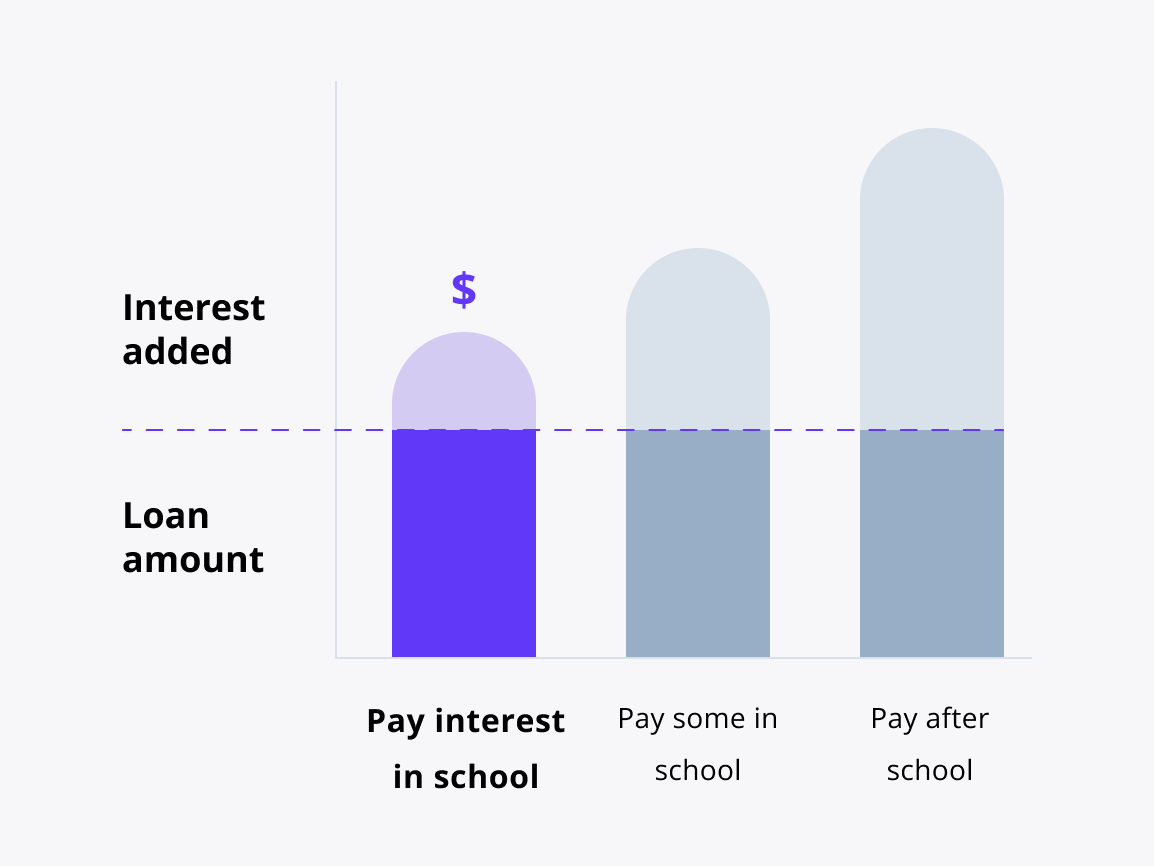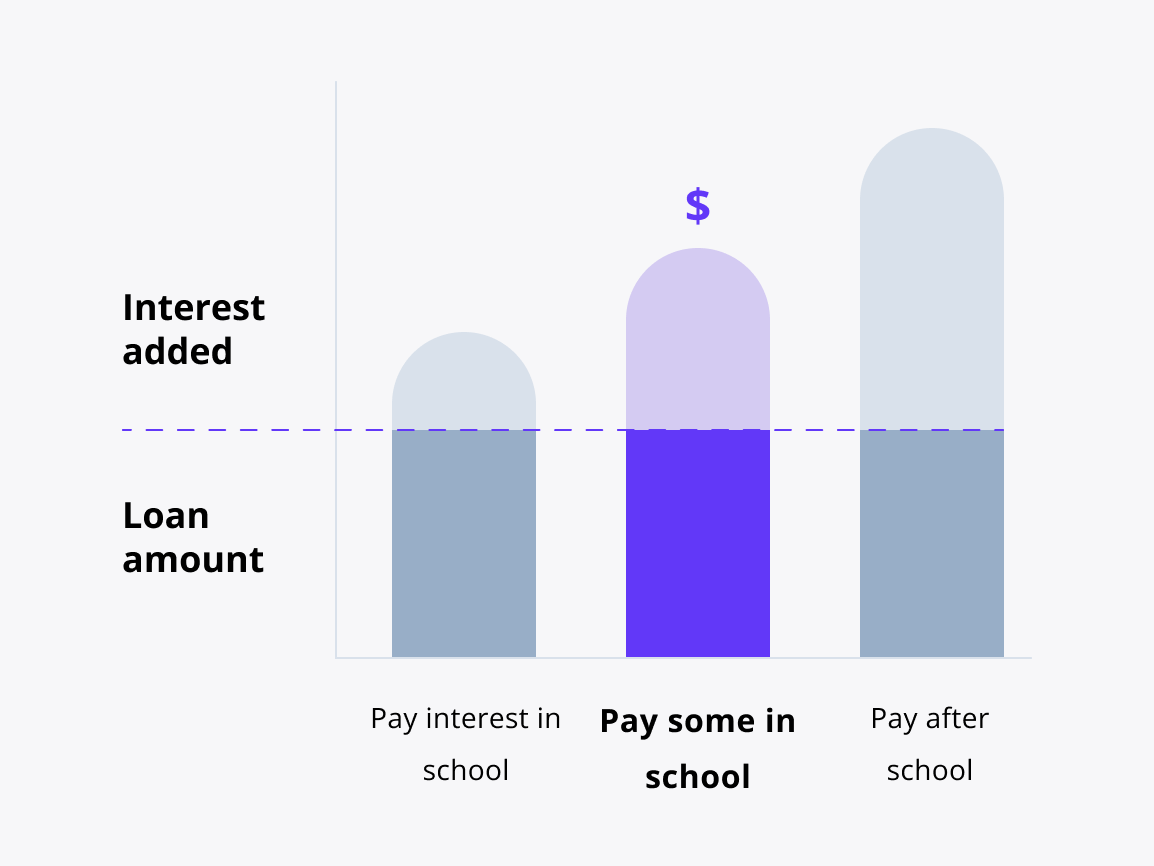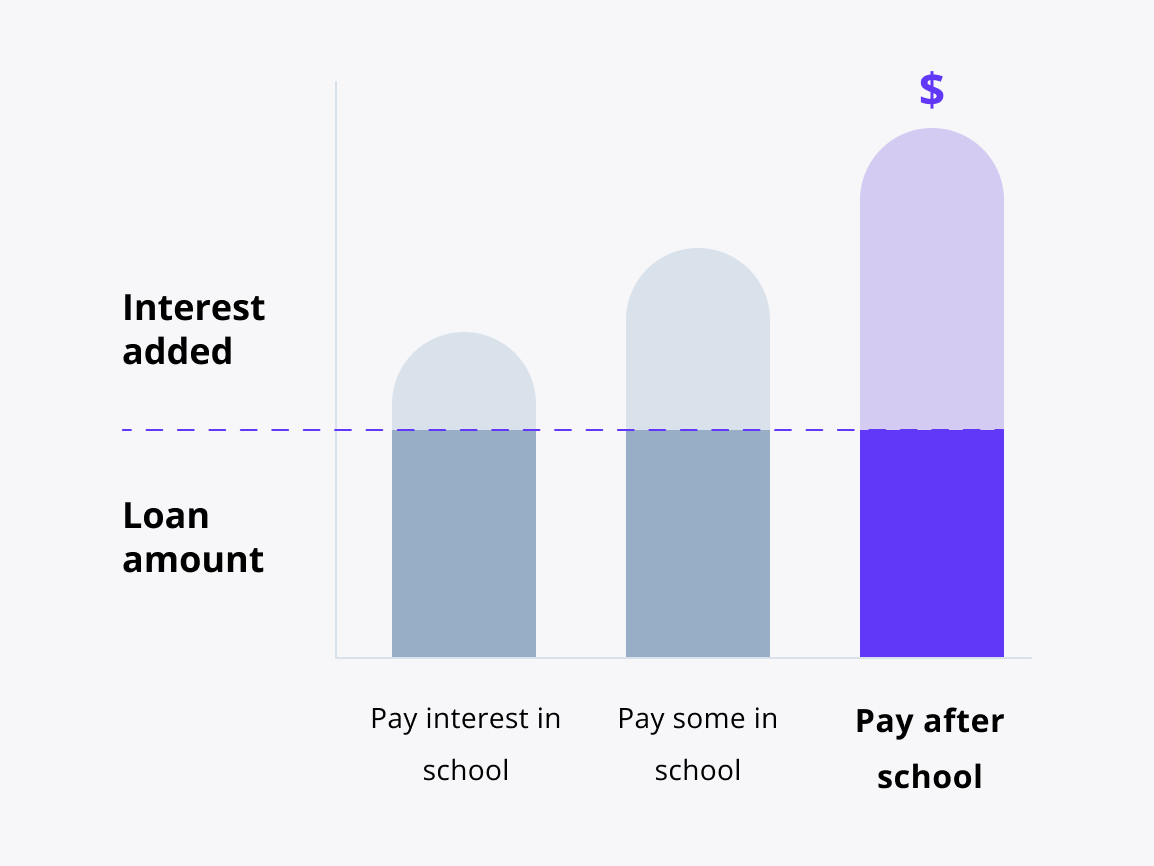Reach your goals with a dental school loan
Get the money you need to pay for dental school related costs as you earn your Doctor of Medicine in Dentistry (DMD) or Doctor of Dental Surgery (DDS).
3.19%
to 14.98% APRfootnote 1
Fixed means your interest rate never changes.
If you want a predictable monthly payment, this is the way to go.

4.37%
to 13.97% APRfootnote 1
Variable interest rates go up or down as the market changes.
This means your monthly payments may also change—they might be higher if interest rates rise and lower if they fall.

Dental school loan benefits
Up to 100% coverage
of your school-certified costs like tuition, fees, housing, meals, travel, and more.footnote 4
Graduate borrowers were 2x more likely to get approved without a cosigner than undergraduates last year.footnote 5
Make 12 interest-only payments after your grace period.footnote 6
Months of deferment during your residency and fellowship.footnote 7
Month grace period to support your dental career.footnote 8
Breaking down your repayment options

Interest repayment option
How does it work?
You pay your interest every month you’re in school and in grace (the 12 months after).footnote 1
This is a great option if you want to save the most.
Students may get an interest rate that is .50 percentage points lower than deferred repayment.footnote 1
Keep in mind:
You might have higher monthly payments, but the total cost of your loan may be lower.

Fixed repayment option
How does it work?
You pay $25 every monthfootnote 9 you’re in school and in grace.footnote 1
This is a great option if you want to make a dent in payments from the start.
Students may get an interest rate that is .25 percentage points lower than deferred repayment.footnote 1
Keep in mind:
Any interest you don’t pay during school will be added to your principal amount (total borrowed) after grace.

Deferred repayment option
How does it work?
You’ll have no scheduled payments while you’re in school and in grace.footnote 1
This is a great option if you want to focus on class and not on making loan payments.
Keep in mind:
The total cost of your loan may be higher because the interest you don’t pay on your loan while you’re in school and grace will be added to the original amount you borrowed (principal amount).
What you gain with our dental school loan
|
Sallie Mae® Dental School Loan |
Other competitors |
|
|---|---|---|
|
Less than half-time enrollment eligibility |
|
|
|
Apply for cosigner release after 12 months of on-time principal and interest payments and when credit plus other eligibility requirements have been metfootnote 10 |
|
|
|
Interest-only payments for 12 months after grace period for qualifying graduate loan borrowersfootnote 6 |
|
|
|
Cover up to 100% of the cost of attendance minus financial aidfootnote 4 |
|
|
|
Fixed and variable interest rate options |
|
|
|
In-school or deferred repayment options for graduate loan borrowersfootnote 1 |
|
|
minutes
1. Tell us some basics
2. Choose your loan options
3. Sign and accept
Doing a medical residency or fellowship?
Our dental residency and relocation loan can help you cover board examination, interview travel, and moving costs.
FAQs
Have other questions? We’re here to help.
1-877-279-7172
How do I apply for a private dental school loan?
It's easy to apply for the Sallie Mae Dental Student Loan. After you click on the link, you’ll be asked a few questions and fill out some basic information about you and your studies. The process usually only takes around 15 minutes.
Do dental school loans offer deferment or forbearance options during residency or fellowship programs?
The Sallie Mae Dental School Loan offers residency and fellowship deferments.footnote 7 You can also explore our dental residency and relocation loan, which can help you pay for expenses associated with board examinations, interview travel, and moving costs
How much can I borrow to go to dental school?
The Sallie Mae Dental School Loan can cover up to 100% of all your school-certified expenses like tuition, fees, books, housing, meals, travel, and even a laptop.footnote 4
Can I use my dental school loans to cover licensing fees?
In some cases, you might be able to use dental school loans to cover things like licensing fees, if those expenses are included in your school's cost of attendance. But it's important to check with your loan provider or financial aid office to confirm that these expenses are eligible under your specific loan terms. And make sure to keep track of your expenses and receipts, as you may need to provide proof of how you used the money. You might also be able to cover things like board examination fees, travel, and moving expenses for your dental residency with a dental residency and relocation loan.
Can international students qualify for dental school loans?
International students can apply for private dental school loans. Students who are not U.S. citizens or permanent residents who reside in and attend school in the U.S. are eligible with a creditworthy cosigner (who must be a U.S. citizen or U.S. permanent resident) and an unexpired government-issued photo ID to verify identity.
Although international students are not eligible for federal student loans through the Free Application for Federal Student Aid (FAFSA®), there is still financial aid, grants, and scholarships available to them.